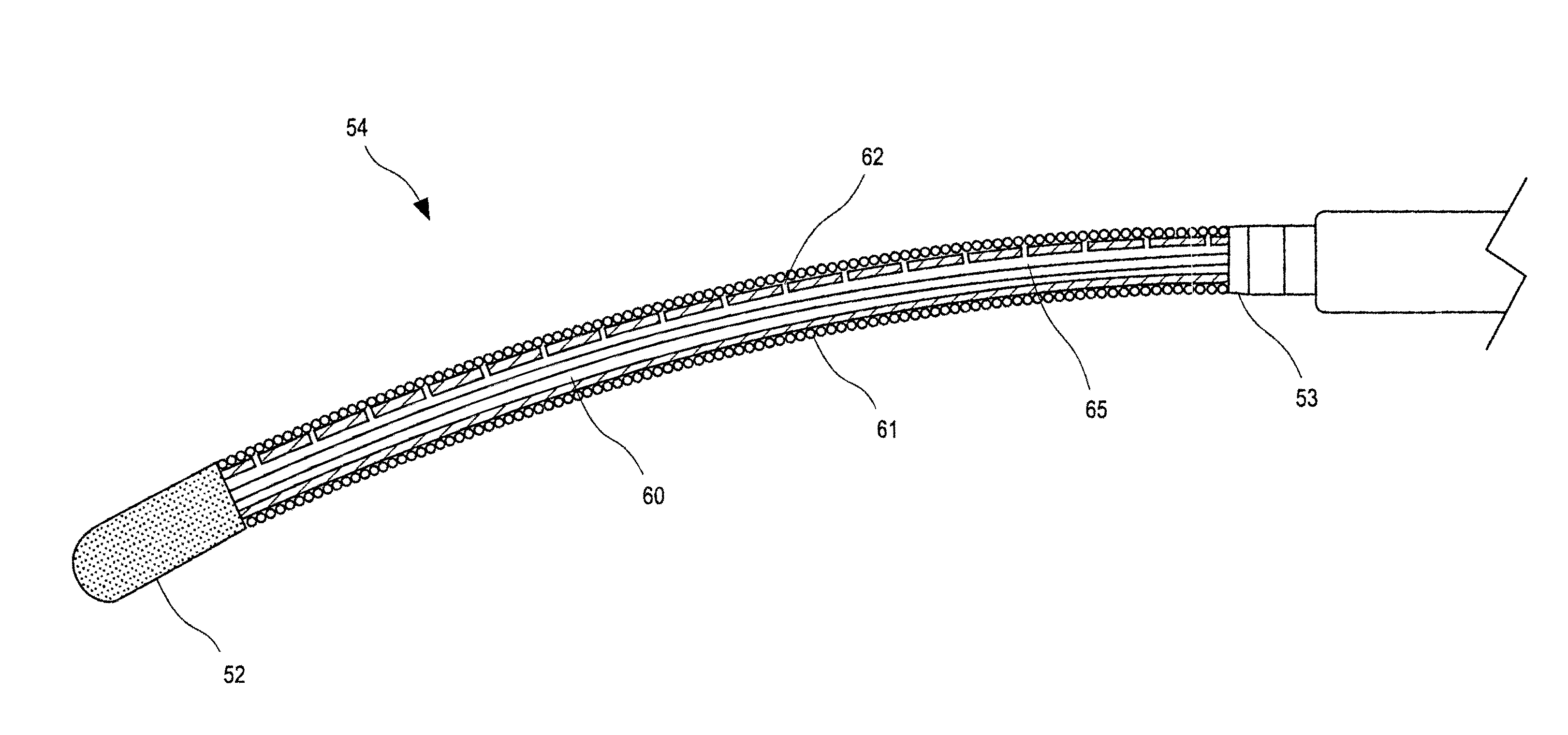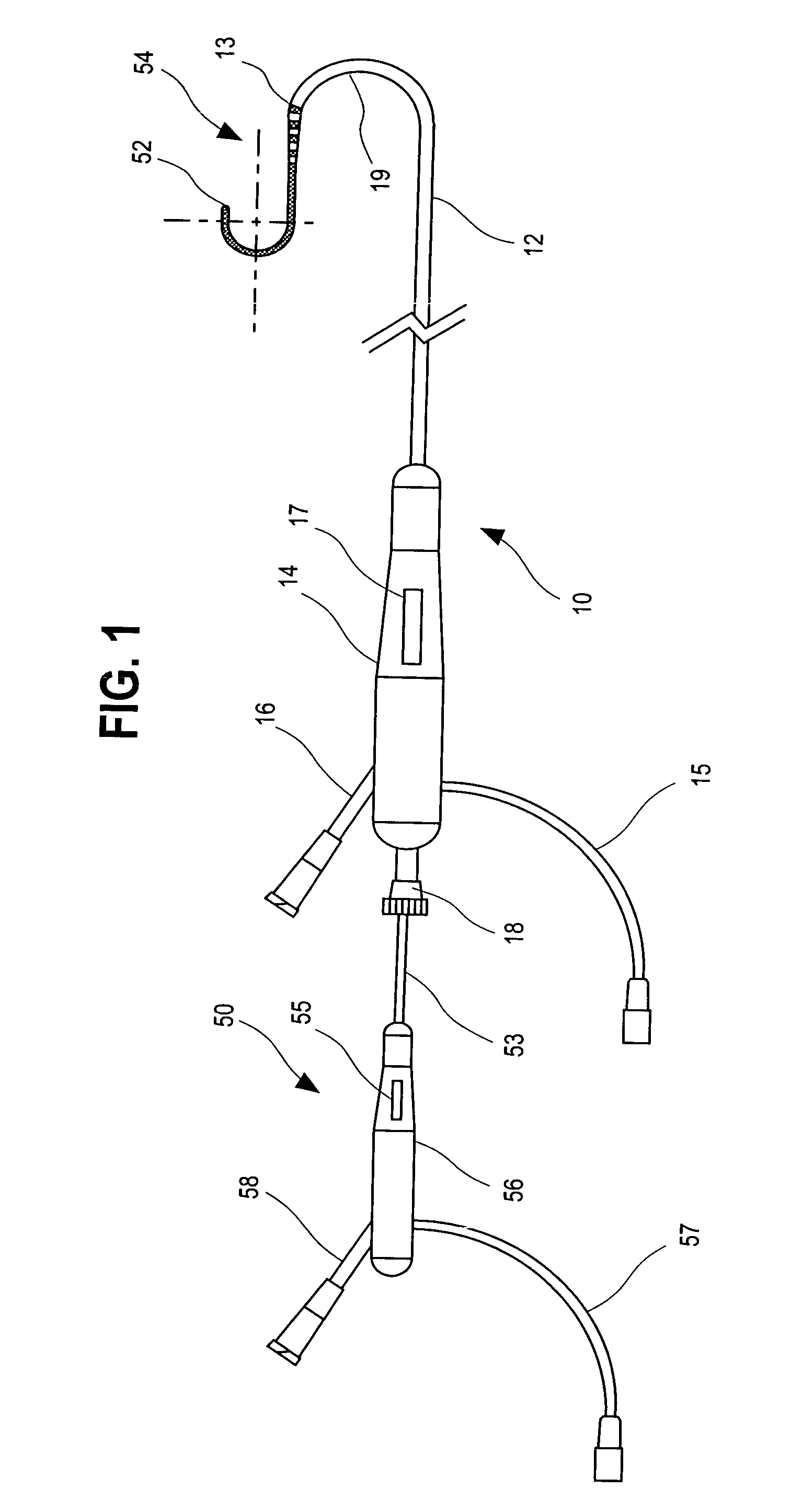Ablation catheter with cooled linear electrode
a linear electrode and catheter technology, applied in the field of catheterization, can solve the problems of inability to make a variety of lesions, inability of prior art ablation catheters to effectively perform a variety of procedures, and cardiac arrhythmias to occur
- Summary
- Abstract
- Description
- Claims
- Application Information
AI Technical Summary
Benefits of technology
Problems solved by technology
Method used
Image
Examples
Embodiment Construction
[0030]Referring to FIG. 1, an ablation catheter is comprised of two major components, an articulating guiding catheter 10 and an inner articulating catheter 50 disposed therein. The guiding catheter 10 is typically inserted into the vascular system and is guided and manipulated through the vascular system until it reaches the appropriate chamber of the heart. Once positioned within the heart, the guiding catheter 10 provides a uniform conduit for introducing the inner catheter 50 into the chambers of the heart. The inner catheter 50 is disposed within the guiding catheter and typically travels within the guiding catheter until a desired location in the heart is reached. At that point the inner catheter 50 is then extended beyond the guiding catheter 10 allowing the inner catheter 50 to more precisely position itself onto a treatment site.
[0031]The guiding catheter 10 is comprised of a shaft section 12 having an articulating section 19 at its distal end and a first handle 14 attached...
PUM
 Login to View More
Login to View More Abstract
Description
Claims
Application Information
 Login to View More
Login to View More - R&D
- Intellectual Property
- Life Sciences
- Materials
- Tech Scout
- Unparalleled Data Quality
- Higher Quality Content
- 60% Fewer Hallucinations
Browse by: Latest US Patents, China's latest patents, Technical Efficacy Thesaurus, Application Domain, Technology Topic, Popular Technical Reports.
© 2025 PatSnap. All rights reserved.Legal|Privacy policy|Modern Slavery Act Transparency Statement|Sitemap|About US| Contact US: help@patsnap.com



